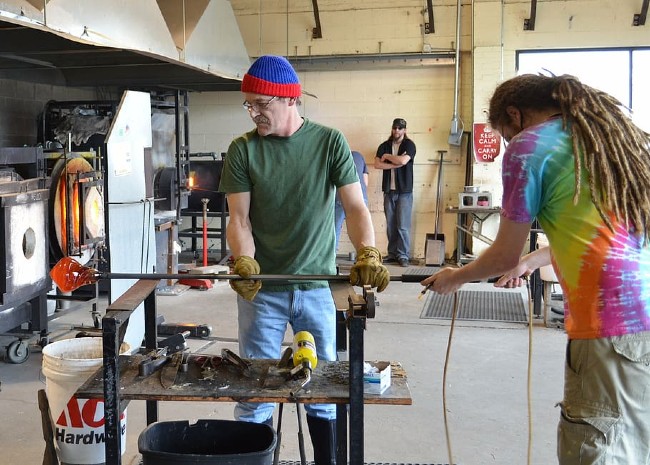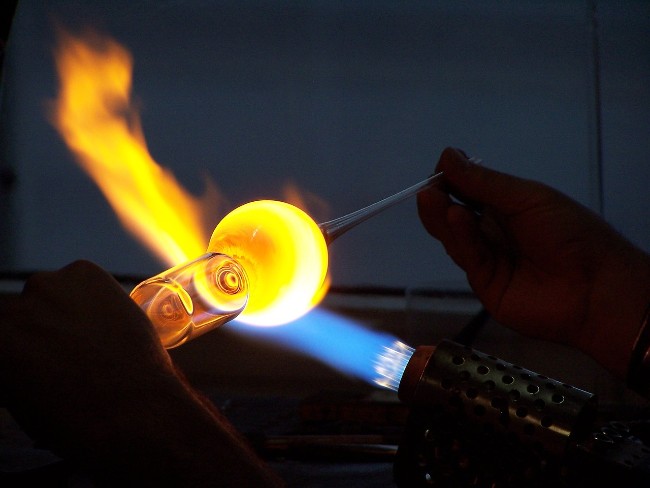
Saturday August 15, 2020
By Paul Barach
 Education
Education
Whatever your preferred way of smoking cannabis, from a dry herb vape to a heady dab hit, there’s a special place in nearly every cannabis fan’s heart for a nice bong rip. The familiar aquarium sound of the percolation, that deep rip of tasty smoke, the long sighing exhale of a full lungful of smoke is an experience that can’t be matched by any other method. Maybe that’s why the unmistakable sample of a deep bong rips has made its way onto so many albums, from Cyprus Hill’s Black Sunday to the Beastie Boys Paul’s Boutique. Bongs can be an irreplaceable piece in every serious pot smoker’s collection, and some are works of pure art.
An elaborate showroom piece of intricate blown glass can really tie a room together, and turns heads every time it is brought out for a relaxing sesh. However, as you look over any bong – whether a stunning, vibrant centerpiece or a plain, functional glass water pipe that gets the job done – it is worth asking: how are they made?
How are Bongs Made?
While modern bongs come in many different materials, from acrylic to silicone, for now we’ll stick with the most common type of bong, which is made out of borosilicate glass.

A glass bong begins, like all glass products, as a combination of sand, sodium carbonate, and lime that’s been heated into a malleable liquid that resembles a thick syrup. This liquid will then be shaped by a glass blower through a series of steps into the classic bong shape that we all know and love.
Step 1 - The Water Chamber
The first step in making a bong is to form the water chamber, which is the base from which all other parts of the bong are connected. The water chamber begins as a long thin tube of glass, which the glass blower then heats with a blowtorch or other heating source.
Heating the glass tube expands it into a larger cylinder that can be further shaped with the right tools.
Next, the glass blower inserts a hollow steel pipe known as a blow pipe into the cylinder and starts carefully blowing air into the hot glass. This is what creates the bubble at the bottom of the water chamber that gives a bong its well-known appearance. The glass blower has to keep turning the glass tubing while blowing to make sure that the bubble doesn’t become lopsided.
Once the water chamber’s bubble reaches the glass blower’s preferred shape or width, they then use a special tool to punch a hole in the bubble where the down-stem will go. This is also where the bowl will slide into once the bong is finished.
Step 2- The Neck
Once the water chamber is formed, the glass blower must form the neck of the bong. This is done by again heating the glass tubing above the water chamber with a blowtorch or other heat source. As this part of the glass tube begins expanding, the glass blower keeps turning the piece to make sure the neck remains evenly cylindrical and vertically straight. Sometimes the glass blower will use a lathe to rotate the cylinder to keep it from getting lopsided, which would make the bong unsellable. Eventually, the cylinder becomes both long and wide enough to work as the neck of the bong, where the mouthpiece will go.
Step 3 - The Mouthpiece
With the neck and water chamber formed, the glass blower’s next task is to form the mouthpiece at the top of the neck. Using either a blowtorch or another heat source, the glass blower softens up the glass in order to separate the bong’s neck from the remaining glass tubing at the preferred length.

Once the neck is separated from that original tubing, the glass blower keeps turning the still malleable piece while smoothing and rounding the top lip of the neck into a mouth piece using special tools. This is done carefully to make certain there are no sharp edges or uncomfortable ridges for the bong’s eventual owner.
Step 4 - The Bowl and Down-Stem
Because the bowl and down-stem are separate pieces from the bong’s body, these pieces must be made before or after the water chamber and neck are completed. Using the same basic glass blowing techniques, these pieces are similarly formed from glass tubes that are heated, turned, blown into, and tool-shaped until the down-stem and bowl are the right size and shape to fit into the hole punched into the bong’s water chamber in step one. The down-stem must fit snugly into the hole, and the bowl must fit snugly into the down-stem while still being able to be slid in and out easily to clear the water chamber and reload the bowl.
Other Considerations for Making a Bong
Of course, this is the basic way a glass blower (or a machine) creates a bong. There are plenty of other ways that glass blowers make their bongs unique and the centerpieces that they sometimes are. If your bong has those brilliant streaks of color, this is done by glass blowers melting chunks of colored glass or other pigments into the mix. Once these additives are melted, the glass blower can expand, stretch, and pull these flecks of color into different patterns, swirls, and lines.
Another way of adding color to the glass is to “fume” it. In this technique, glass blowers vaporize metals like gold, platinum, or silver before injecting that vapor into the glass tubing.
Fuming the tube coats the inside of the glass with metal. Once the glass blower begins expanding and stretching the cylinder into the water chamber and neck, the metal warps and transforms into vibrant streaks of color.
The glass blower might also add a percolator, ice catcher, or other extra to make the bong even more enjoyable to use. So the next time you’re sparking up the bowl on your bong – ready to percolate a deep, tasty lungful of smoke – take a moment to take in the craftsmanship that went into it. Any bong, whether simple or elaborate, is worth a moment of appreciation.
Do you enjoy taking bong rips? Share your favorite bong types and experiences in the comments below







